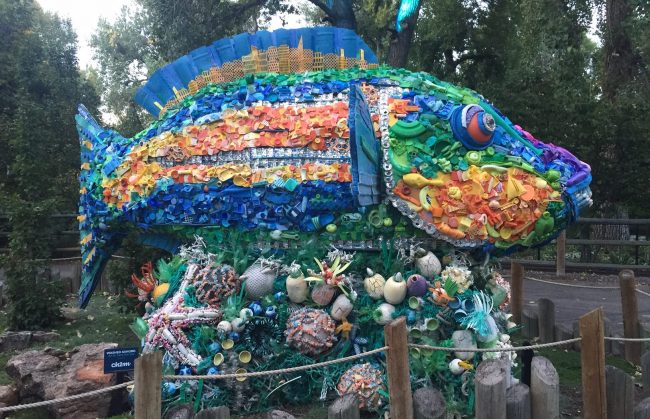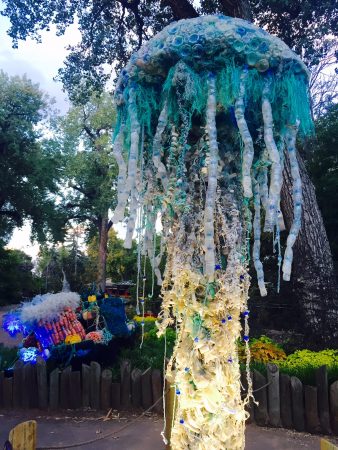

The world may be a big place, but we’re all connected in ways we can’t even imagine. Take the topic of trash, for instance. We don’t often think about it once it’s been disposed of, but how we handle waste affects generations to come. It can even affect those in countries half way around the world.
The “Washed Ashore” art exhibit is proof of that. The traveling exhibit is currently on display at the Denver Zoo in Denver, Colorado. Washed Ashore features 15 giant sculptures of marine life around the park made almost entirely from trash collected along 300 miles of beach on the Oregon Coast.

The trash has been collected and sorted by thousands of volunteers since the project’s inception in 2010. More than 18 tons of trash were collected and then used to create a stunning collection of artwork under the direction of Artistic Director Angela Haseltine Pozzi.
The sculptures are of sea creatures most of us will recognize, from a giant sea turtle to a colorful triggerfish and a tiger shark. From afar, the art pieces are intricately-detailed sculptures; up close, though, it’s easy to see the pieces of trash that make up the artwork, from discarded shoes, plastic toys and water bottles to strange items like toilet seats.

One striking piece is a giant jellyfish made entirely from water bottles that were handed out at the 2008 Olympics in Beijing. The bottles still bear the easily identifiable Olympic logo. Tragically, they ended up on the shores of Oregon many years later.
The jellyfish sculpture also shares the implicit danger of water bottles in our oceans. To a sea turtle or fish, the clear plastic looks like a jellyfish, a deadly mistake for creatures who try to eat them.
“We hope that, although the artwork is fun and somewhat beautiful, it will also stop everyone in their tracks and make them look at their own habits,” says Pozzi. “Every piece of plastic on all of our sculptures was found on ocean beaches and nothing was colored. Plastic comes in every color, shape and size you can imagine. That is one reason we have the problem of plastic pollution, there is just too much of it.”
“I wish I would run out of art supplies,” the artist continues.
The art pieces are a reminder of how fragile our world is, and how each of us can take steps to make a difference.
If You Go
Washed Ashore runs at the Denver Zoo through January 16, 2007.
DenverZoo.org
WashedAshore.org
- 6 Reasons to Visit Silverthorne, Colorado - June 30, 2024
- An Estes Park Family Favorite: YMCA of the Rockies - June 18, 2024
- What Are the Latest Trends in Cruise Excursions? - June 9, 2024
